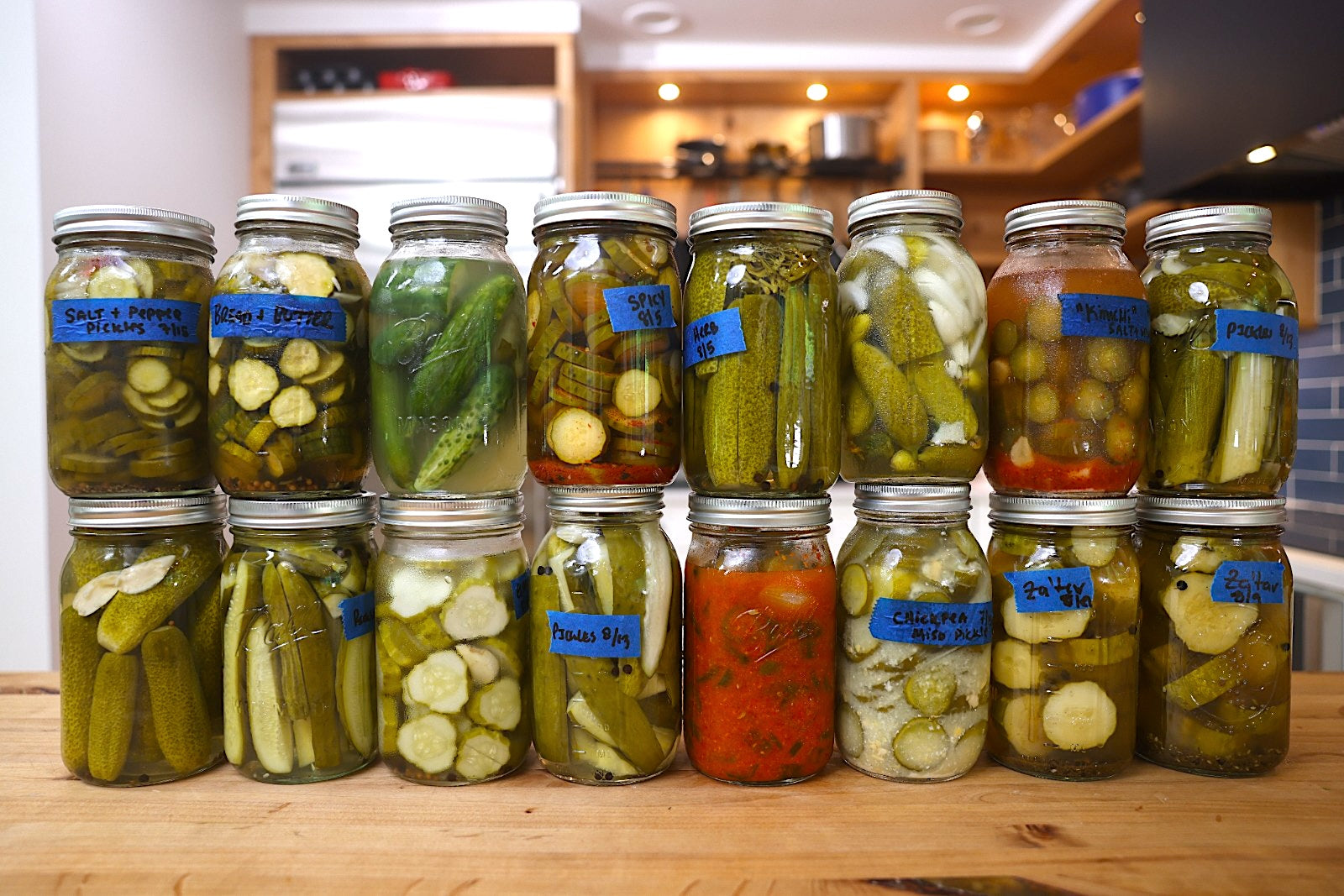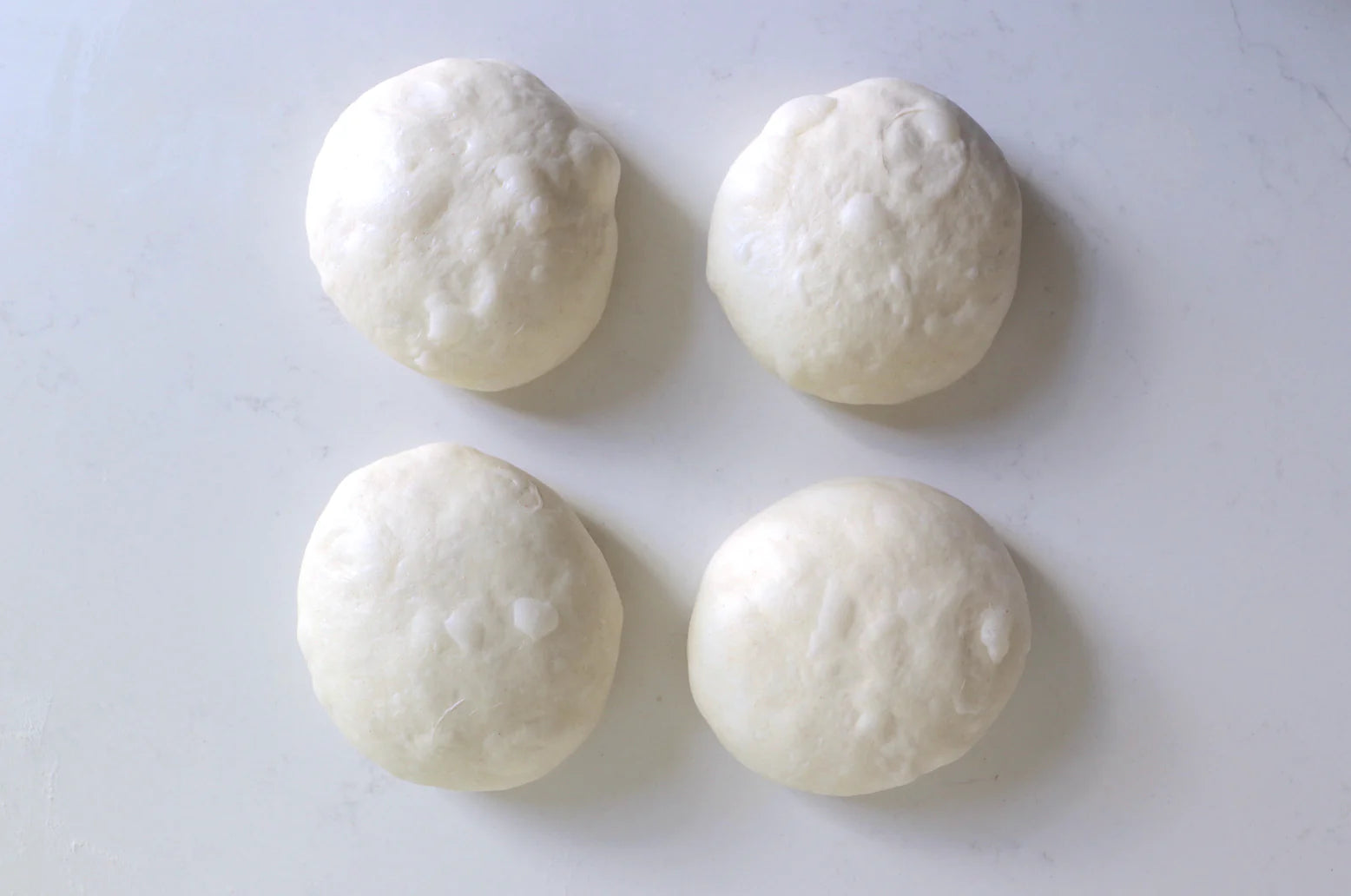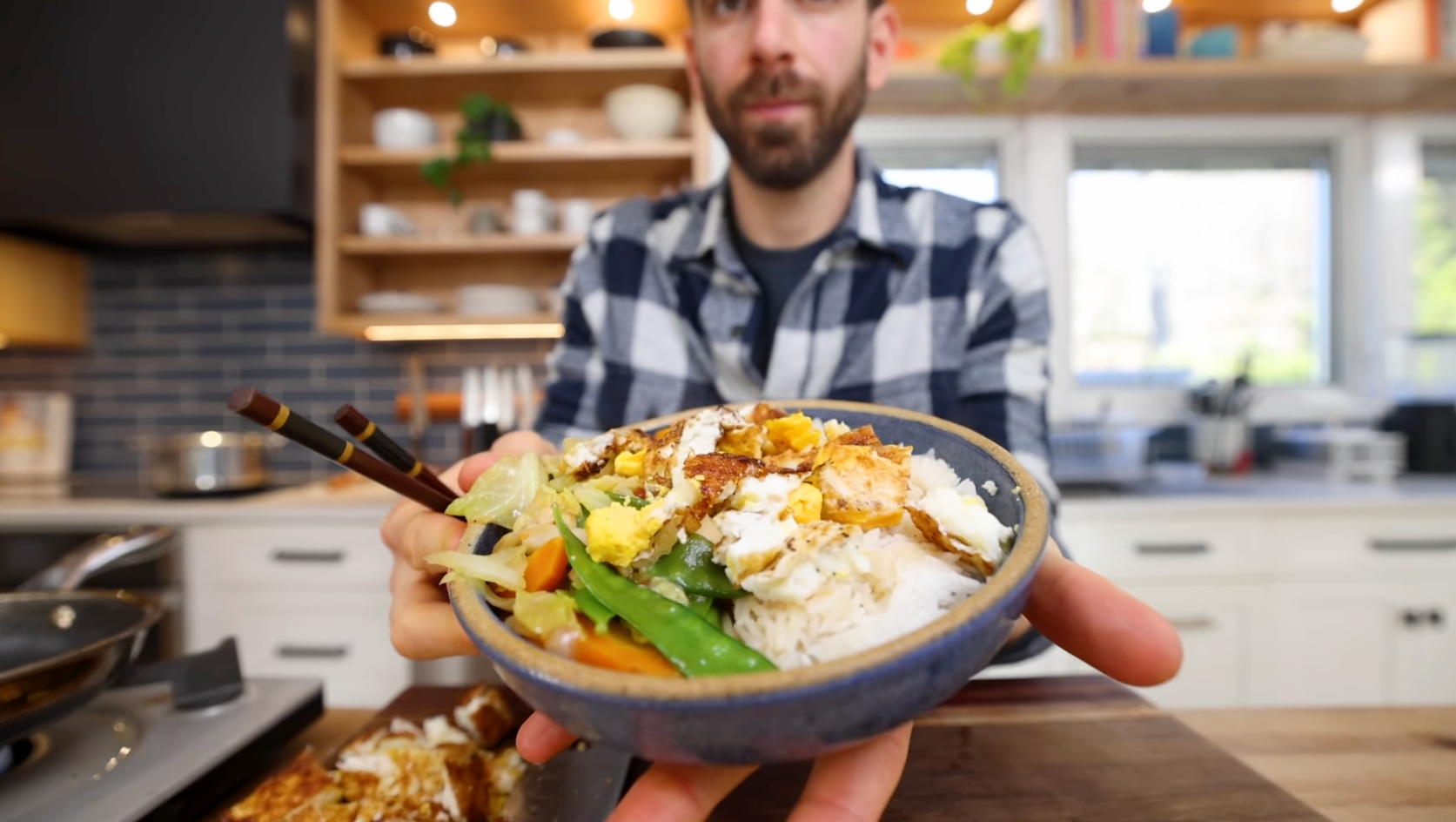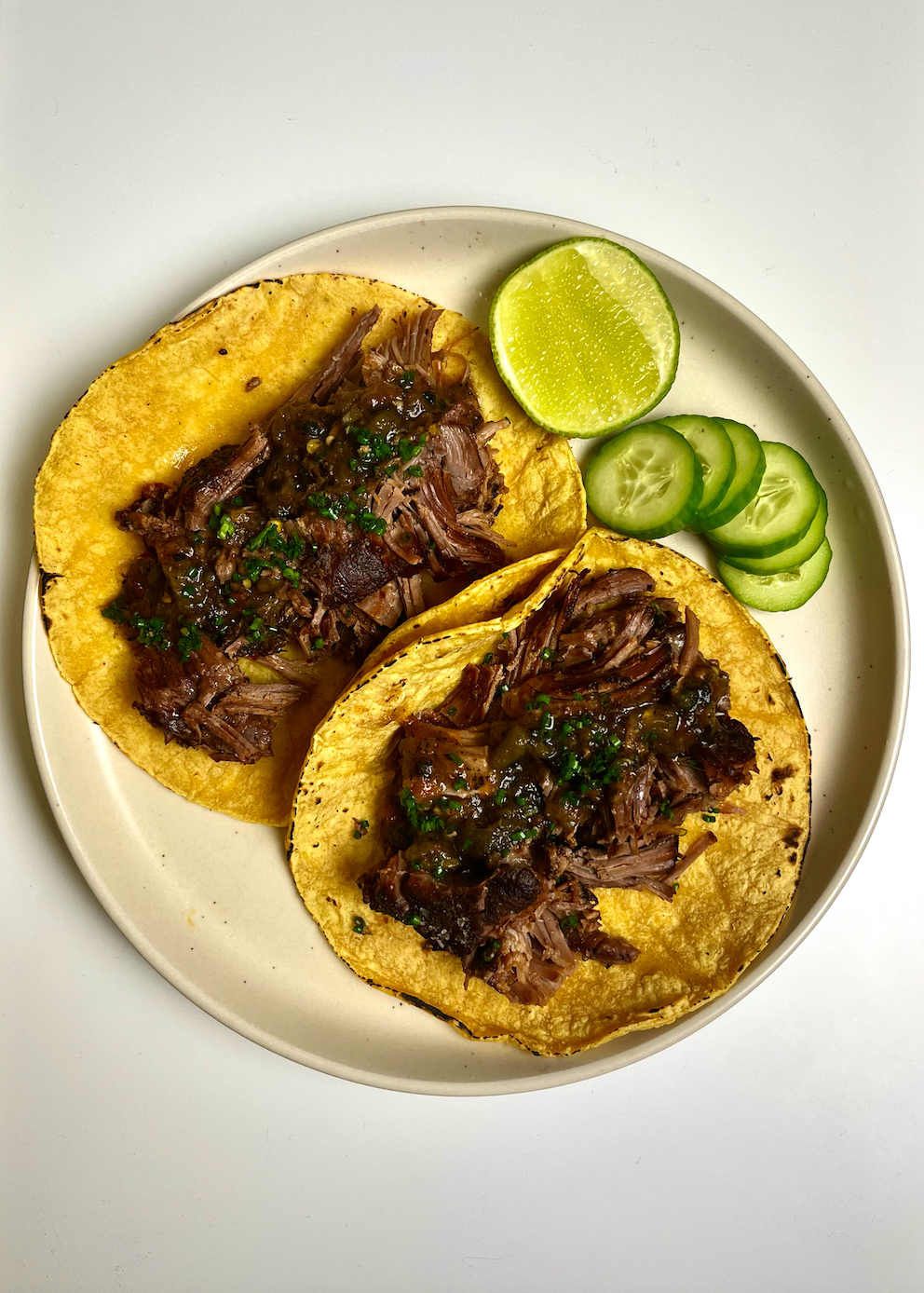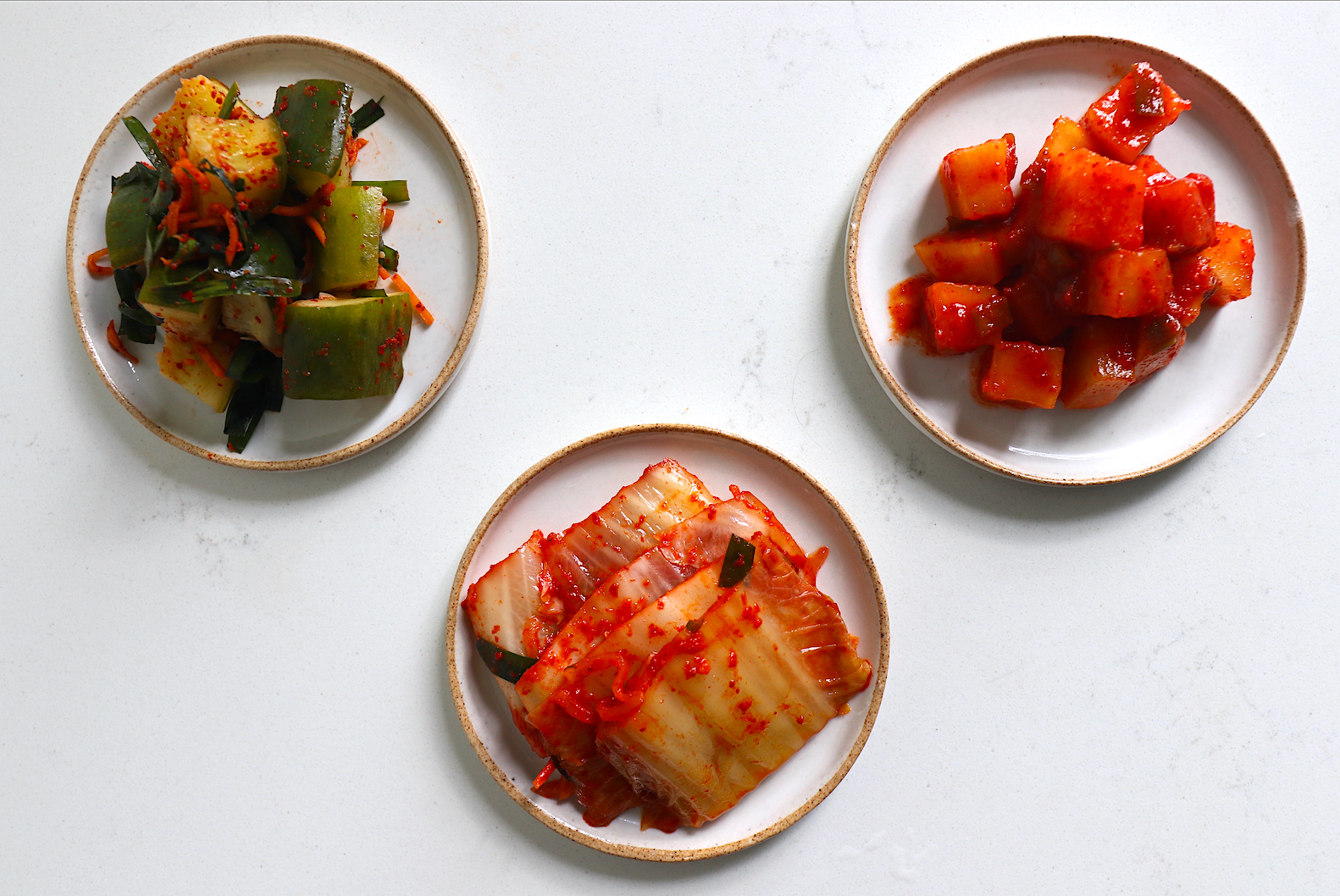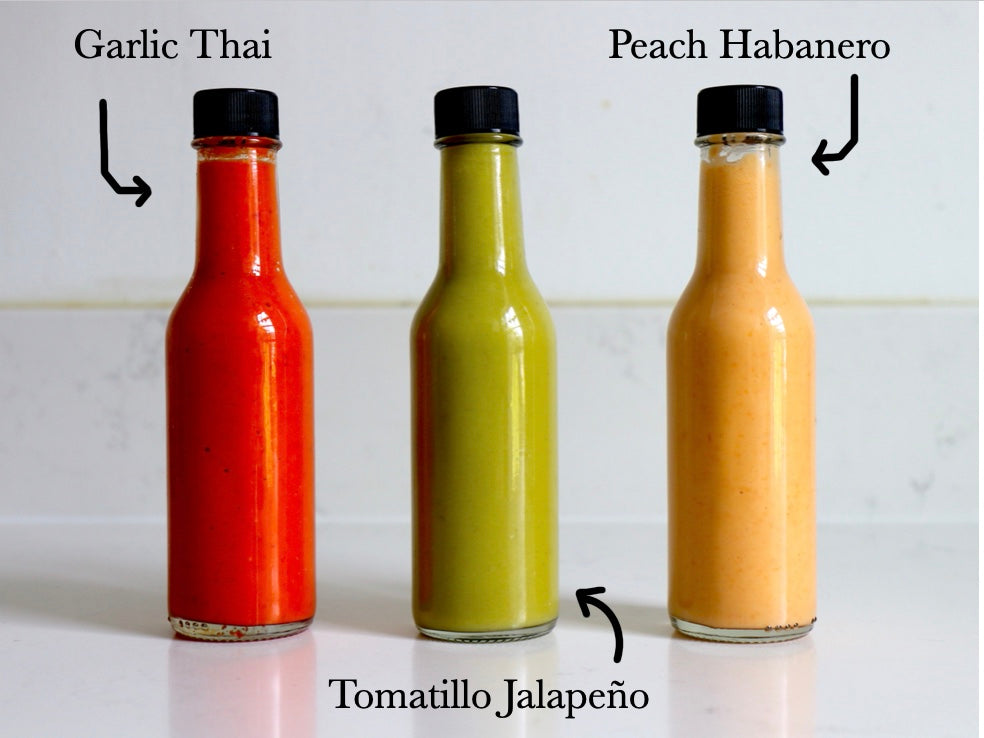
Lacto Fermented Hot Sauce
By Alex C
Senior Food Writer at Pro Home Cooks
We are in the peak of summer here in New York so my garden is loaded with tomatoes, herbs, and peppers. I have never had any trouble getting through pounds of fresh tomatoes, however I always seem to have a surplus of peppers. I can imagine there are a lot of other people that have the same pepper problem so one cool way to use up all your peppers is to make lacto-fermented hot sauce! The process of making lacto-fermented hot sauce is simple and straightforward so once you get that process down feel free to add different flavors and seasoning to you homemade hot sauce! I made three different flavors: tomatillo jalapeno, peach habanero, and a garlic thai pepper hot sauce.

First things first, you will need mason jars & their lids, fermenting weights, gloves, a scale, blender, hot sauce bottles (optional), and a funnel. Handling hot peppers can be very dangerous so regardless of whether you are using a mild jalapeno or a spicy habanero, please use gloves. I did NOT use gloves and my hands burned for 6 hours straight so please be safe and use some plastic gloves. Keep a window open if you can and thoroughly wash all knives and cutting boards after you are finished using them.
You can make regular hot sauce but there are many benefits to making lacto-fermented hot sauce. Fermenting the peppers before blending them into a sauce allows the flavors of the pepper to develop. A fermented pepper has more complex and rich flavors than a fresh, cooked, or dried pepper. Fermenting peppers will bring out the fruity, tangy, and sometimes even slightly sour notes, adding depth and complexity to the hot sauce. The peppers will also start to break down as it ferments, improving the texture of the final product and mellowing out the heat of the pepper into a more enjoyable and balanced spice level. Lastly, a fresh pepper hot sauce will last about 2 -3 weeks while a fermented hot sauce will last about 3-6 months because of the probiotics and good bacteria. Not only does it help preserve the hot sauce without an additional preservatives, it is also good for your health!

Every batch of fermented hot sauce will be different depending on the chilies you use, the length of fermentation, and any additional flavorings or spices making every batch of hot sauce unique! However, the process of fermenting peppers will be the same every time!
- Start by placing a mason jar on top of a scale, zero it out so you don't include the weight of the jar.
- Next, place in peppers and all the items you want to ferment. This can include garlic onions, spices, sweeteners, fruits, etc.
- Pour enough water just to cover everything. Check the scale to find the total weight in grams of the water and the ingredients.
- Multiply that number by .02 because this will tell you the exact amount of salt you will add.
- Add in the salt and then top with a fermentation weight to make sure everything is submerged under water.
- Seal the jar and gently shake to distribute and dissolve the salt.
- Let ferment for 5 - 7 days, opening the jar once a day to release the carbonation.

Once you are done fermenting you are ready to make your hot sauce! You will notice the color of the water goes from clear to creamy white. You may even see some white film on the surface, no need to worry this is just a type of yeast. If you see fuzz, throw it out because that means it’s moldy and has gone bad. Drain everything out, reserving some brine. Place everything into a blender, add any fresh items you might have wanted like ginger juice, lime, cilantro, etc and blend with some brine, vinegar, and/or oil! Give it a quick check to see if you like the salt and acidic levels. Finally, when you are happy with it, you can run it through a fine mesh sieve to have a smoother final product or funnel it straight into a hot sauce bottle or jar. Store in the fridge for 3-6 months.

When creating your homemade hot sauce, I would recommend adding supporting flavors in order to enhance the flavors the spicy peppers. Out of the three flavors I made, the tomatillo jalapeño and peach habanero were my favorite. Surprisingly, the peach habanero was very mild despite habaneros being high on the Scoville scale. It was also on the sweeter side because of the peach and honey. The tomatillo jalapeno was the most balanced out of the three. With the acidic tomatillo, garlic, and mix of spicy peppers it landed best hot sauce to me! The red one was the only one that had only hot peppers and it had no real flavor and was too hot for me. So, I adjusted the recipe to include sweet peppers to help balance out the flavors. If you want to give one of these hot sauces a try, check out the recipes here. If you'd like to learn more about lacto-fermenting, click here to read a quick start guide about it!
TOP ARTICLES

Sourdough Baking School
Master the art of sourdough bread baking in the most comprehensive baking class on the internet. This class features over three hours of baking content to help you start your sourdough journey.
See More



